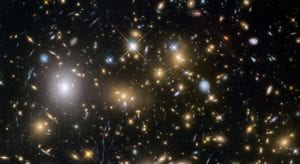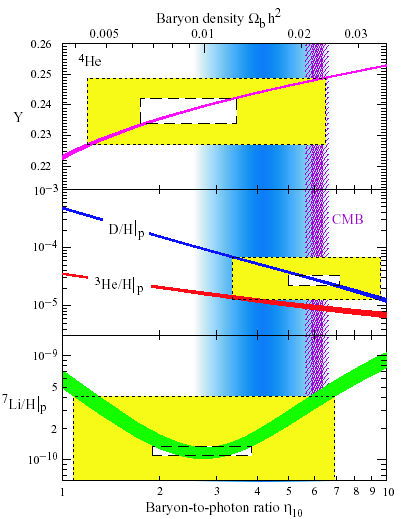Cosmology: The Big Bang
Historically the assertion that our Universe began in a Big Bang was based on three observations: the “Hubble” expansion of the Universe, the observation of the 2.7 Kelvin cosmic microwave background radiation, and the synthesis of the light elements H, He, and Li that were produced in Big Bang nucleosynthesis in the first few minutes of our Universe’s life.
Recent high precision measurements of the CMB radiation and observations of high redshift Type 1A supernovae have greatly improved our understanding of the details of the Big Bang. However, the Li abundance continues to be a problem in understanding the Big Bang abundances.
This figure (right) shows the abundances of the nuclides produced in the Big Bang as a function of the Baryon to Photon ratio, i.e., essentially the density of the Universe during Big Bang Nucleosynthesis. The white boxes show the preferred abundances for 4He, D/H, and 7Li/H ratios, while the yellow boxes indicate statistically acceptable regions. The region in purple is thought to represent the correct value of the BP ratio. Although agreement appears somewhat marginal, it should be noted that the abundances are in fair agreement over ten orders of magnitude.
Boyd’s BBN Collaboration

Image credit: NASA
Boyd and his collaborators have recently analyzed the myriad of nuclear reactions that contribute to BBN, and have identified those that might contribute the most uncertainty to the Li abundance.
See R.N. Boyd, C. Brune, G.M. Fuller, & C. Smith, Phys. Rev. D 82, 105005 (2010).

